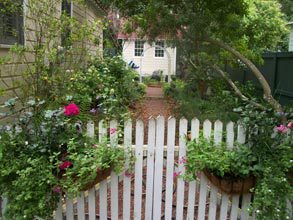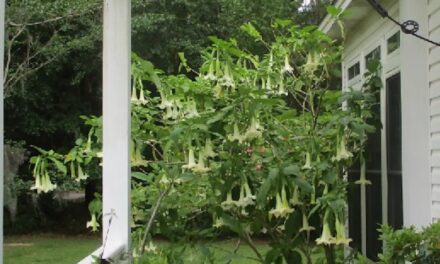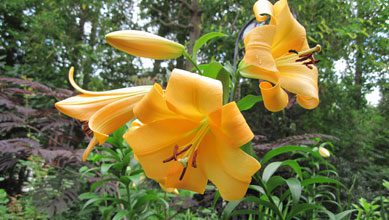If the tree is in a container, dig the hole two or three times wider than the pot. Remove the pot and check the roots. If the roots are very tight or circle on the outside, use a sharp knife or hand pruners to cut the roots. These tools should be sanitized and free of dirt. They can be wiped or sprayed with disinfectant or rubbing alcohol before and after use. If you are planting balled and burlapped B&B, remove all of the straps, fabric, and wire. Place the root ball in a planting hole dug no deeper than that ball. For bare root trees, containerized and B&B, find the location of the lateral roots and plant the tree so that the flare at the base of the trunk is just at the soil line not deeper. If the drainage isn’t ideal in the location, the root ball can be 2 to 4 inches higher than the surrounding soil, covering with mulch but no soil. Nitrogen fertilizer is not needed at this time. You may want to mix a couple of buckets of mushroom compost or leaf mold to add organic matter to sandy soils or break up clay soils. Backfill and water well, tamping around the base with the handle of a shovel to remove air pockets. Water the newly planted tree well every day for a week. Then water every other day the second week, gradually reducing irrigation to about 1-2” a week.
Mulch can be spread 2 to 4 inches over the planted area. It should be a few inches away from the trunk to avoid too much moisture. Some commonly used mulches are pine needles, hardwood mulch, pine bark, and leaves. These eventually break down in the soils and add organic matter.
Pruning is not usually done at this time for ornamental trees, an exception being fruit trees, which are specifically trained to optimize sunlight and air circulation. With any tree that is planted it is always correct to remove broken, damaged or diseased branches.
Light, moisture, space, soil, and use are all important considerations for planting correctly. A plant in the right place which is correctly planted should give years of enjoyment to the gardener and possibly future generations of gardeners.








